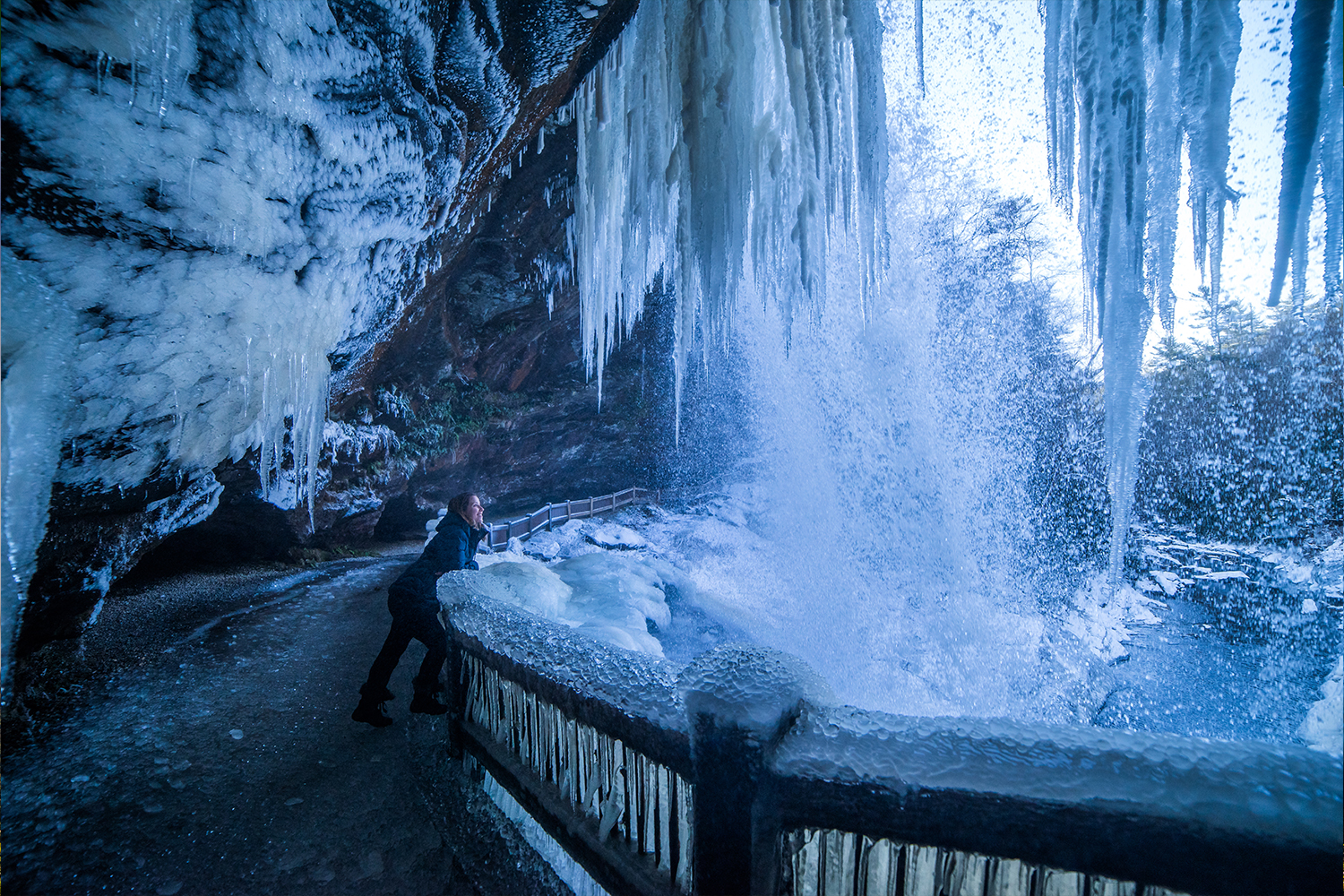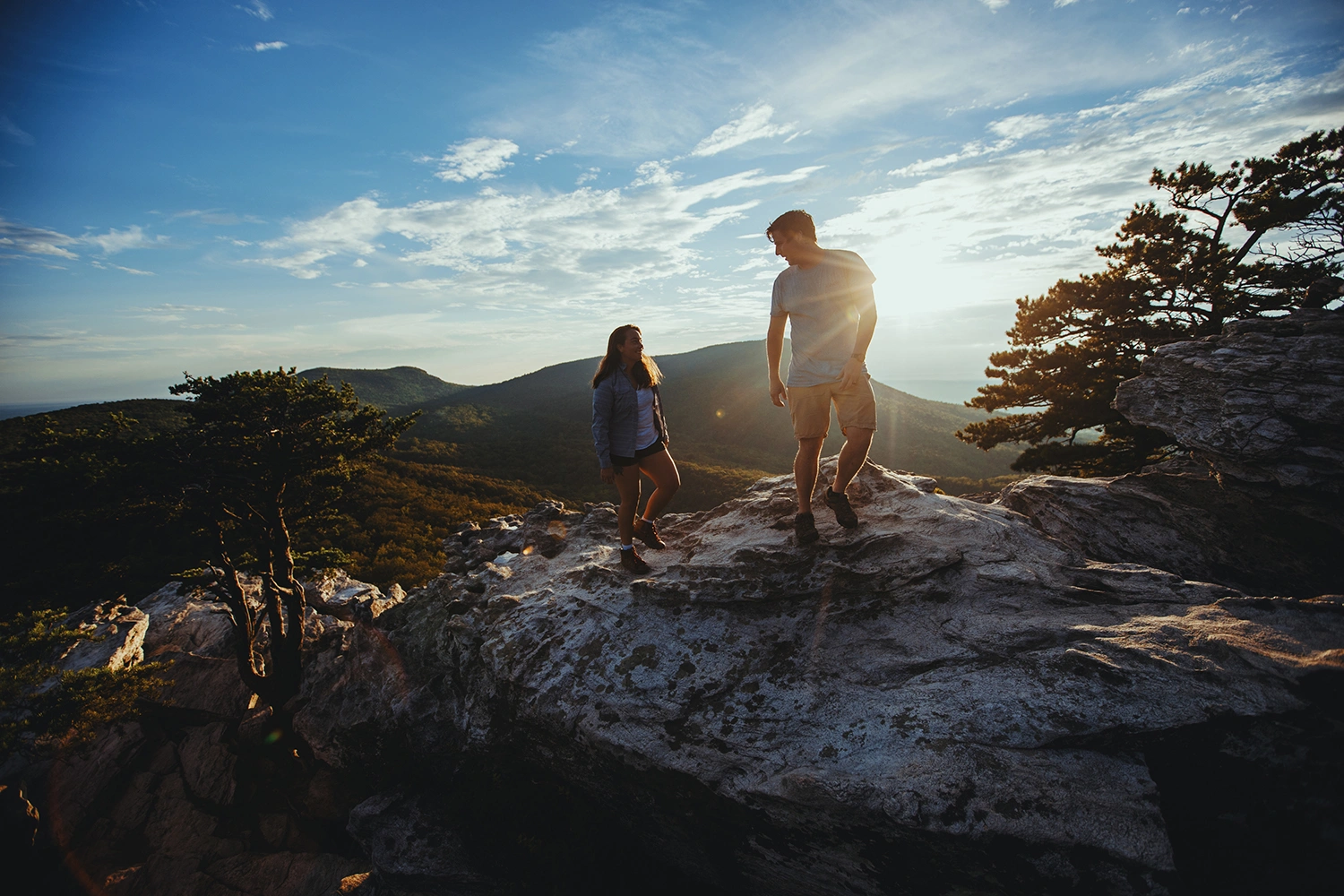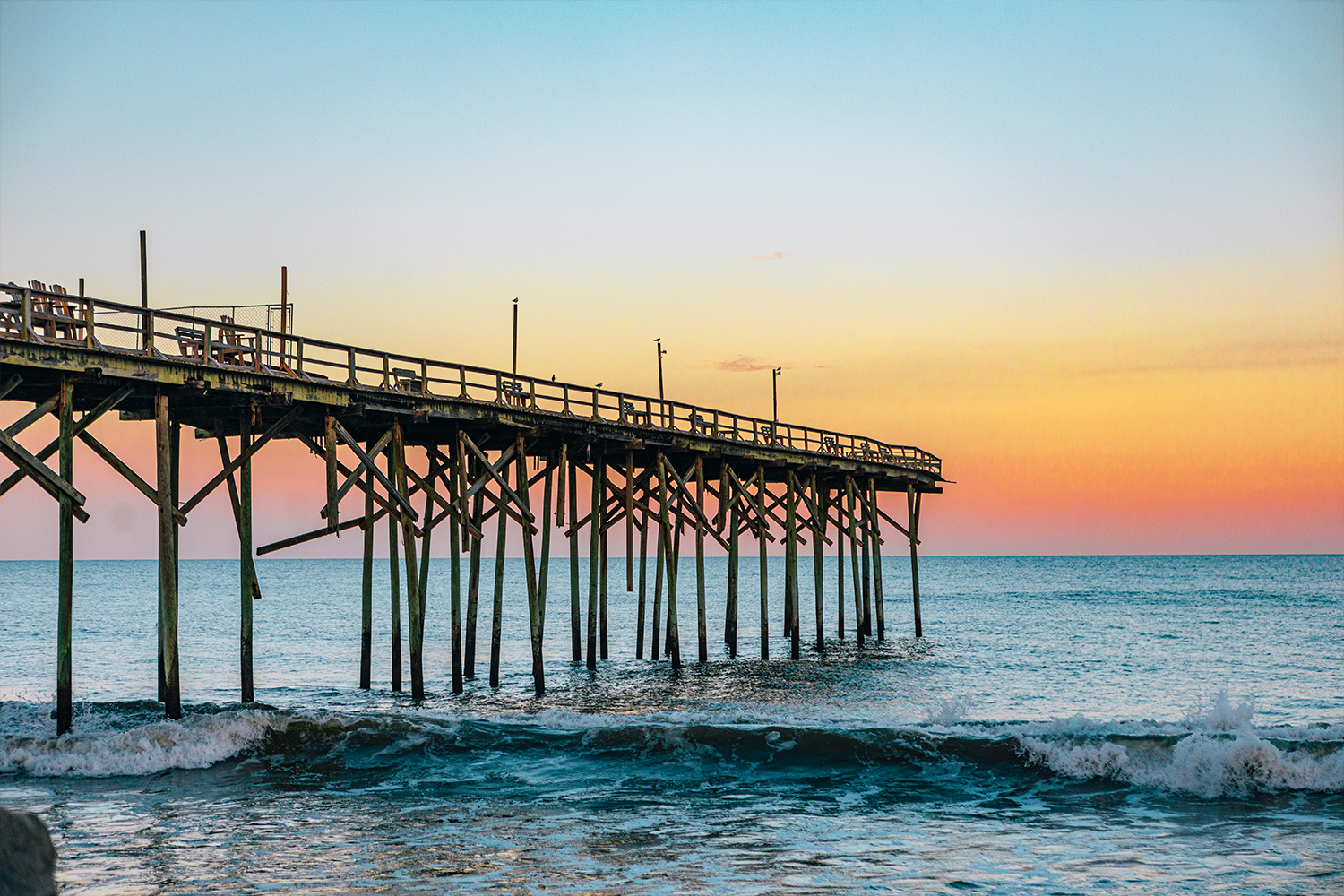Frosty Trails & Campfire Tails: Gear Up for a Winter Camping Adventure
IN THIS POST
North Carolina offers a diverse array of terrain, stretching from the high peaks of the Appalachians to the rolling Piedmont to the grassy dunes of the coast. These landscapes, during the colder months, become peaceful retreats for winter camping where the quiet beauty and sense of belonging remind you that winter adventuring comes naturally. There are fewer people on the trails, less crowds at campgrounds and nothing can rival the views that come with clear winter skies.
With the changes in elevation and topography across the state, you can choose your own winter camping expedition. Below, we share a few destinations for the best camping in North Carolina during the winter inspiring you to embrace the natural beauty that draws us all to these shared outdoor spaces.
Find Outdoor Adventure in North Carolina at Ammons Branch Campground
Feel immersed in the beauty of Nantahala National Forest with a camping trip to Ammons Branch.
Just minutes from the quaint mountain town of Highlands, it’s a cozy retreat that offers a quiet respite into nature. Visitors often note its peaceful serenity and seclusion, making it a big draw for those looking to escape the hustle and bustle.
There are multiple trails nearby that lead to breathtaking views along the Chattooga River. While the campground is open year-round, it’s arguably the best in the winter since crowds are sparse and long-range views are exposed due to the lack of tree leaves.
With hiking and fishing access, this site is a winter camping destination with fun for the whole family. The campground offers picnic tables and fire rings – perfect for meals together and nighttime storytelling around the campfire. Set up your winter camping spot, and you’ll have plenty of outdoor adventure waiting just outside your tent.

Winter Camping in the Piedmont at Hanging Rock State Park
Escape the hustle and bustle of the city for an outdoor adventure at Hanging Rock State Park. Located in central NC, a mere 32 miles from Winston-Salem, this park boasts many outdoor activities suited for the whole family such as paddling down the Dan River, hiking to waterfalls, or biking singletrack trails.
With 42 campsites and 10 cabins, visitors have plenty of options for overnight accommodations. And if you love hiking, some of the key hiking trails begin directly from the campground road making it easy to explore the beauty of the NC Piedmont.

Coastal North Carolina Adventures at Carolina Beach State Park
Get ready for a fun-filled camping weekend at Carolina Beach State Park with a variety of outdoor experiences right at your fingertips. With six miles of trails, you can experience the diverse terrain along the east bank of the Cape Fear River.
Your coastal camping adventure will take you through a pine savanna; up a 50-foot high Sugarloaf Dune, across white sand expanses and through a maritime forest where you can observe Venus flytraps (a unique carnivorous plant native to the area) up close.
For a water adventure, grab your kayak and paddle to one of the islands in the middle of the Cape Fear River, or head east up Snow’s Cut and explore the backside of Wilmington’s unique barrier islands.

Outdoor NC - Leave No Trace: Learning from the Experts
Protecting our natural spaces often starts with education.
With millions of visitors coming to our state every year, it’s important to have trained outdoor professionals to help spread the Outdoor NC Leave No Trace message, educating and inspiring visitors on how they can better preserve our cherished outdoor spaces while having fun too.
Meet Lee “Natty” Trebotich — owner of Food for Adventures, Outdoor NC Leave No Trace guide, and outdoor enthusiast. His love and passion for the outdoors goes beyond just outdoor cooking, education and campground recipes. He’s an active supporter of preserving of our beautiful outdoor spaces too.
Here are Natty’s top five winter camping and cooking tips to ensure you have a great time while protecting the environment you’re visiting too.
1. KEEPING YOUR FOOD FRESH:
While colder temperatures can decrease the risk of food going bad, it can still be a challenge to keep your food unfrozen. To avoid your snacks and small bites from freezing, store them in your jacket pockets. For larger items, wrap them in a bag and place them in a jacket or a bag surrounded by insulation. These methods can help prevent your food from freezing and to help get your next meal started faster.
2. CHOOSING WHAT FOOD TO EAT:
When it comes to meals in cold weather, the most important thing is to prepare food that you enjoy. Proper nutrition and hydration are essential when facing extreme cold. If you’re planning an extended exercise in wintery conditions, consider incorporating starches, such as pasta, grains, fruits and vegetables into your meals. Starches break down slowly, providing your body with more fuel to generate heat and keep you warm. Remember, the more you eat in colder conditions, the warmer your body will be.
3. WASHING DISHES IN COLD TEMPERATURES IN THE BACKCOUNTRY:
If necessary, only use small amounts of biodegradable soap in the backcountry for dishes to keep contaminants out of the environment. In the winter, it can be treacherous to properly discard any dish water due to adverse conditions. Here’s a “Outdoor NC Leave No Trace” tip: discard any dishwasher into a stump hole to avoid polluting surface waters such as streams, rivers, etc.
4. FUEL CONSUMPTION AND RATIONS:
Fuel consumption and rations are paramount when it comes to backcountry winter camping. While any type of fuel can be used, our experience shows that liquid fuel stoves work best. Not only does the fuel not freeze, but you won’t have to deal with pesky empty fuel cans after each use. However, when handling liquid fuel in the cold, be sure to wear gloves. Exposure to the fuel or its evaporation can cause frostbite if it comes into contact with your skin.
5. USING SNOW FOR WATER:
Melting snow for a water supply is a great way to save on weight. But be cautious — treat snow like an untreated source of water and always bring it to a boil for at least 1-3 minutes; and have a designated snow area for gathering drinking water. Always remember to respect the surrounding environment and animals and leave a minimum impact to the ecosystem while gathering water. Here’s a bonus tip to avoid the pesky frozen lid on your water bottle: store your water bottle upside down overnight and sleep with your water bottle in your sleeping bag.
Keep it Wild: Tools for Protecting Our Cherished Outdoor Spaces
Whether you’re camping on the sand, among the trees, or under a starry night in the mountains, you’re in for a memorable experience surrounded by the sounds and sights of nature that come alive during the winter season. While you’re having fun camping with your loved ones, it’s important to remember you’re also sharing these spaces with native flora and fauna too. So how can you help ensure that they’re well taken care of? Here are some key tips:
PLAN AHEAD AND PREPARED FOR WEATHER AND COLD TEMPERATURES
Before heading out into the fresh air and wilderness, plan ahead and prepare for whatever weather conditions and cold Mother Nature may throw your way. In doing so, you’re putting your safety first and protecting the outdoors as well.
For example, research the local regulations to educate yourself whether you should bring in firewood or if you need to source it from the local area. Firewood from another location could result in introducing unwanted pests.
Make sure you do the necessary research and prepare before your trip so you understand the campground rules and have the right resources, equipment, and enough warm layers to keep you cozy during your trip.
BE CAREFUL WITH FIRE TO KEEP IMPACTS TO A MINIMUM
It’s amazing how quickly an innocent campfire (or even a spark) can go rogue and wreak havoc on the environment. So, if you’re looking to stay up late sharing stories over s’mores, remember to build your campfire responsibly to avoid future impacts.
Where fires are permitted on your campground, remember to use fire rings, fire pans, or mound fires to keep your campfire contained. Keep fires small either by purchasing firewood from the campsite or by using sticks that are small enough to be broken by hand. Lastly, when you’re done for the night, burn all wood and coal to ash, make sure the fire is completely out and scatter the cool ashes.


